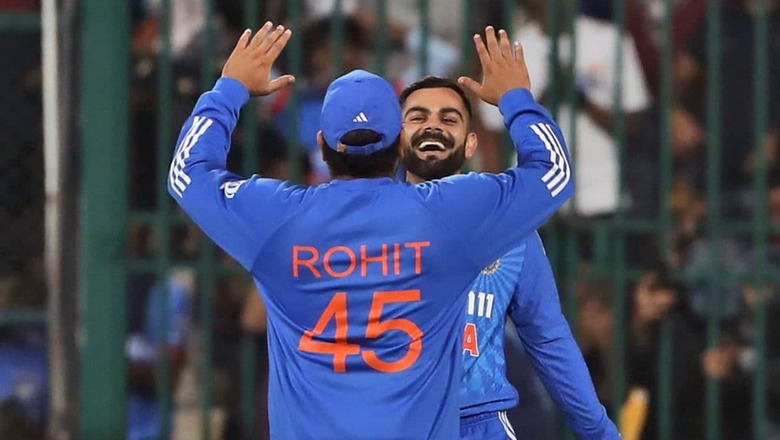
views
India and Afghanistan played a memorable match in the 3rd T20I at the M.Chinnaswamy Stadium in Bengaluru on Wednesday. In a historic moment, the match went to two Super Overs for the first time in Twenty20 internationals.
How It Happened: India vs Afghanistan 3rd T20I
Rohit (121 not out, 69b, 11×4, 8×6) and his perfect sidekick Rinku Singh (69 n.o., 39b, 2×4, 6×6) shared 190 runs for a stellar, unbeaten fifth-wicket stand as India came back from a flaky 22 for four after opting to bat first.
Rahmanullah Gurbaz, Ibrahim Zadran and Gulbadin Naib scored half-centries to help Afghanistan come close to India’s total but ended their innings also on 212/6 from their 20 overs.
That meant a Super Over.
Mukesh Kumar took the ball, Gulbadin and Mohammad Nabi walked out only for the former to be run out. Gurbaz came out as Afghanistan managed to post 16 runs thanks to some lusty blows from Nabi.
In reply, Rohit and Yashasvi Jaiswal walked out as the Indian captain smashed the ball all over the park but walked back to the dug out as Rinku walked out. Jaiswal managed to get only one run from the last ball from Azmatullah Omarzai as scores were tied again.
Another Super Over was needed.
Rinku, Rohit and Samson helped India get to 11 all-out from Fareed Ahmad’s over as Ravi Bishnoi managed to get the wickets of Gurbaz and Nabi to bowl out for just one run and helping India win the second super over.
Here are the ICC rules for Super Overs:
16.3 All other matches – A Tie or No Result
16.3.1 A Tie
16.3.1.1 – If the teams’ scores are equal after both innings have been completed, then a Super Over shall be played. If the Super Over is a tie, then unless exceptional circumstances arise subsequent Super Overs shall be played until there is a winner. Should it not be possible to play or to complete the Super Overs needed to determine a winner, the match shall be tied.
WHAT ARE THE RULES OF SECOND SUPER-OVER?
If the Super Over is tied, then subsequent Super Overs shall be played until
there is a winner (subject to paragraph 26).
In normal circumstances any subsequent Super Over shall start 5 minutes
after the previous Super Over ends.
The team batting second in the previous Super Over shall bat first in the
subsequent Super Over.
The balls selected for use by each team in the previous Super Over shall be
used again by the same team in any subsequent Super Over(s).
The fielding side shall bowl its over in a subsequent Super Over from the
opposite end from which it bowled in the previous Super Over.
Any batsman dismissed in any previous Super Over shall be ineligible to bat in
any subsequent Super Over.
Any bowler who bowled in the previous Super Over shall be ineligible to bowl
in the subsequent Super Over.
In all other ways the procedure for a subsequent Super Over shall be the same
as for the initial Super Over.
WHAT ARE THE OTHER INSTANCES OF DOUBLE SUPER OVER in T20s?
The only other instance of a twin Super Over happened in the IPL 2020 between Kings XI Punjab and Mumbai Indians, which KXIP won. In this match, both teams scored 176/6 in their stipulated 20 overs which KIP chasing. In the first Super Over, both the teams scored 5 runs forcing the game to the second Super Over of the match in which MI managed to score 11 runs for one wicket. In reply, Chris Gayle tonked and six and Mayank Agarwal hit two two off Trent Boult to win it for KXIP,




















Comments
0 comment